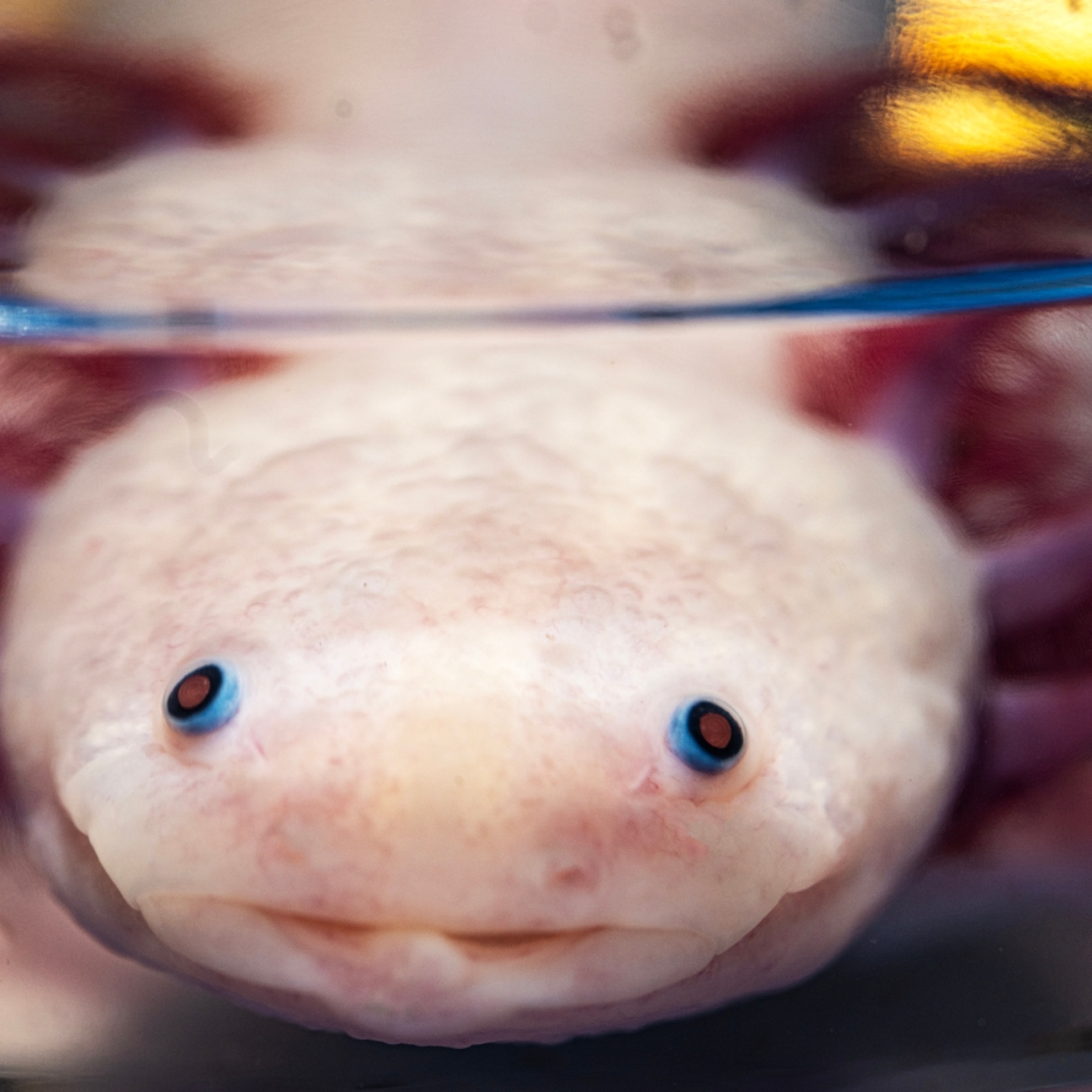
Pictures: 5 Animals That Regrow Body Parts
Some lizards and other animals can lose their body parts, but are masterful at regenerating them.
When you were a kid you might have had the trauma-thrill of thinking you caught a lizard and opening your hand to find nothing but its squirming tail.
Some lizards and other animals can lose their body parts, but are masterful at regenerating them—a feat we humans are sadly less capable of doing (except in the case of our liver).
But what we are great at is learning from those masters. See below for a roundup of some of nature’s great regenerators and how they may help people down the road. (Related: “Will We Ever Regenerate Limbs?")
Axolotl
You may recognize this face as the poster animal of this blog, but the Mexican axolotl hasn’t been spoiled by fame. This hard worker not only can make copies like Xerox—regenerating a missing limb; tail; and parts of their brain, heart, and lower jaw—but it’s a favorite study subject among scientists.
James Monaghan, a biologist at Boston’s Northeastern University, began studying axolotls during a grad school project and stuck with them since.
“If they’re paralyzed in the back they can recover the functions of their legs … They can make all new neurons and new connections that allow them to use their legs again, which is really one of the most incredible examples of recovery.”
His most recent research has focused on what genes regulate the axolotls’ regenerative abilities, testing what happens when certain genes are turned on or off. The axolotl “is a great model because it has a wide tool set to study regeneration,” he said.
Deer
If you read Thidwick, the Big-Hearted Moose as a child, you were amazed that an animal could just chuck and regrow those huge antlers on a regular basis. (See video: Deer and Antelope: Amazing Antlers.)

Antlers growing back “is one of the most extreme examples of regeneration out there,” Monaghan said. A deer can regrow 60 pounds (27 kilograms) in as little as three months. (Also see: Deer Antler Velvet: What Is It and How Does It Work?)
“We’re finding that mammals have the ability to regenerate more than we appreciated before,” Monaghan said. Rabbits can regenerate parts of their ear lobes, bats can regenerate parts of their wings, and spiny mice can quickly regenerate skin and repair holes in their own ears, he noted.
So that’s why Minnie wears that bow instead of earrings…
Sea Squirt/Tunicate
This little squirt could be responsible for some big insight into regeneration.
The sea squirt, also called a tunicate, reproduces in two ways: Solitary types produce sexually, and colonial sea squirts can reproduce both sexually or asexually by budding off one another.
Otto Guedelhoefer, a researcher at University of California, Santa Barbara, said via email that asexual members of a colony share a circulatory system and are capable of whole body regeneration.
You would’t guess it to look at them, but sea squirts are also surprisingly similar to us genetically. An international team of scientists recently sequenced the genome of the tunicate Botryllus schlosseri and found that 77 percent of our genes were present, offering hope for regenerative medicines in people. (Also see “Sea Squirts Have Precursor to Human Heart.”)
For Guedelhoefer, a real area of intrigue is why tunicates’ regenerative abilities slow down with age, making them a potential platform for studying aging in animals—including us.
Starfish (Sea Star)
From Bikini Bottom to Fifth Avenue, everyone loves a starfish. These five-limbed creatures also have the ability to regenerate their arms and sometimes their whole bodies.

Even if the critter is down to one arm, as long as it has its central nerve ring intact, it can grow into an entirely new starfish.
Er … sea star. The starfish, you see, isn’t actually a fish. It’s an echinoderm—cousin to the equally spiny sea urchin, sand dollar, and sea cucumber—so marine scientists are trying to get the name sea star to catch on as its new moniker.
It can regenerate. It can probably manage to rebrand.
Flatworm
It has been observed for centuries that if you cut a worm in half it will regenerate to become two worms. Biologist Thomas Hunt Morgan illustrated the regenerative powers of the planarian worm in a 1901 book but despaired of ever understanding regeneration.
How blown away he would have been by what’s available to scientists today.
“That’s what’s exciting,” Monaghan said. “We’re getting the molecular tools to ask what genes are regulating these regenerating phenomena.”
And planarians are still a star subject. In 2011, MIT researchers transplanted a special cell into a dying, irradiated planarian and the animal was able to fully regenerate. This year, researchers at the Max Planck Institute of Molecular Cell Biology and Genetics in Germany found a molecular switch in a flatworm that enabled it to grow a new head. Also this year, scientists at Tufts University showed that a decapitated planarian will not only regrow a new head, it will retain learned information as well as planarians who never lost their heads.
Guarantee: Next time you lose your keys, you’ll remember that a worm using a replacement head would probably have remembered where he/she put them.








